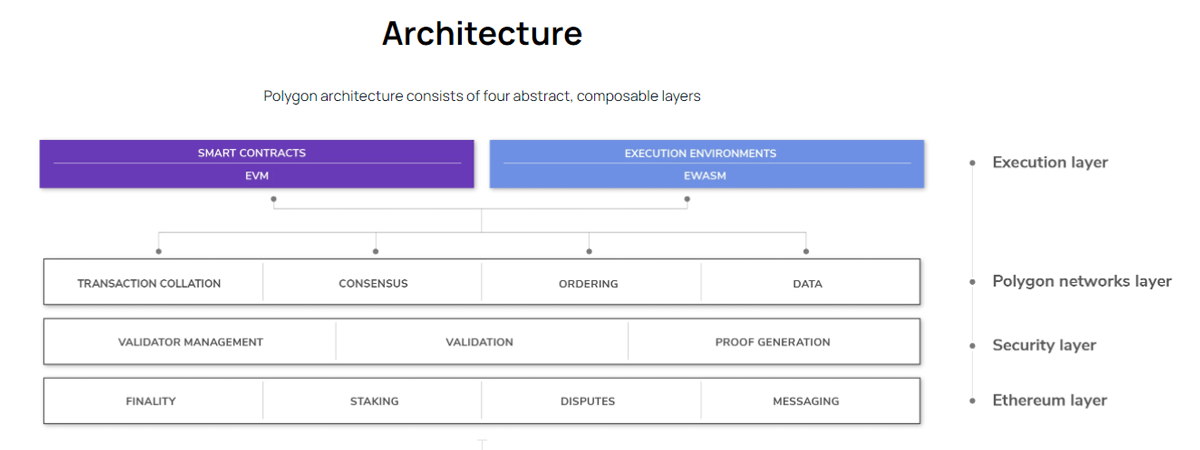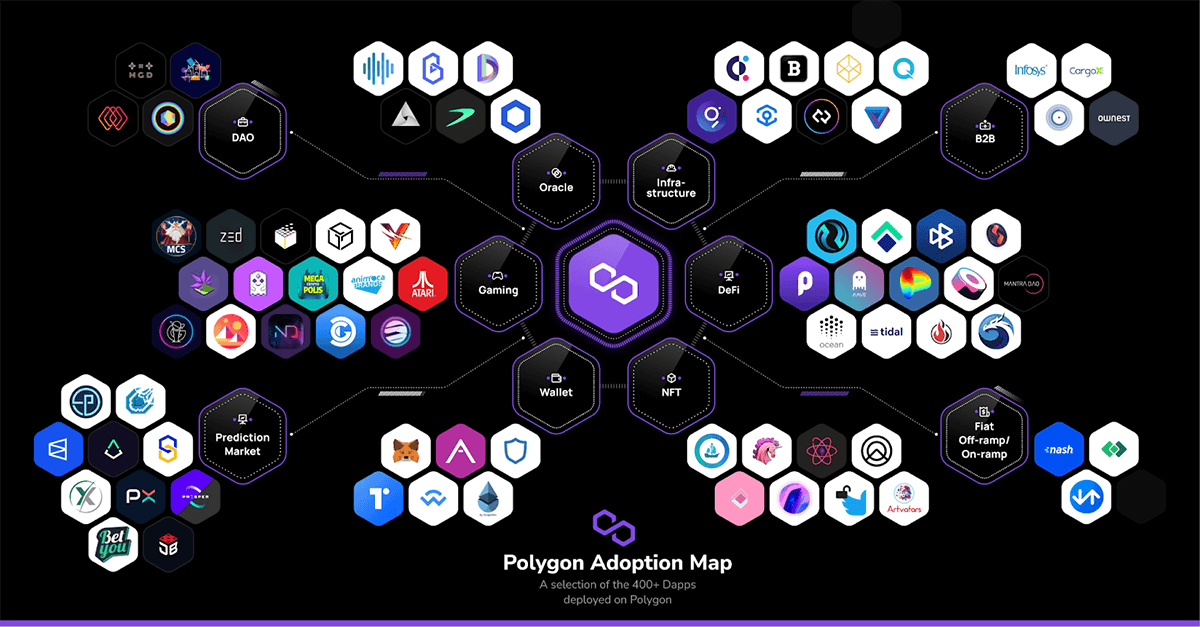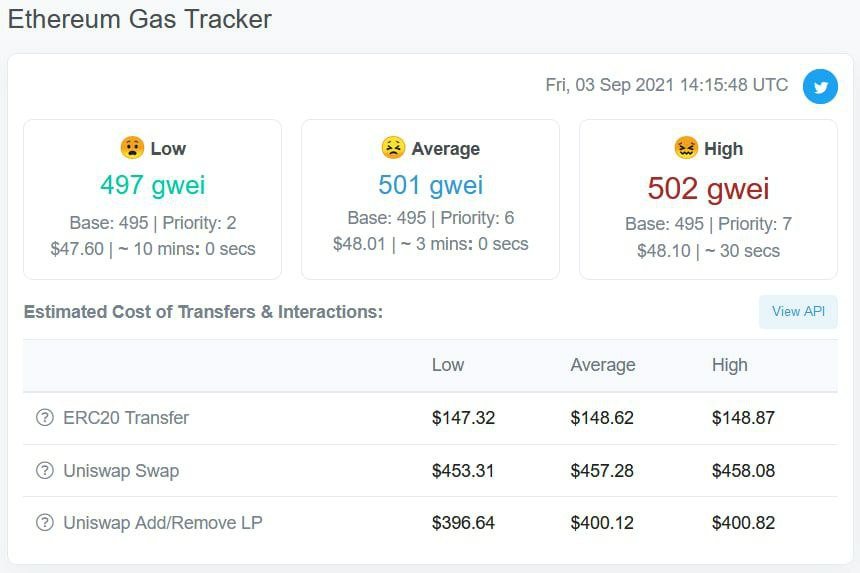For those wondering what is Polygon Network, you have come to the right place. Here, you will find a complete rundown of one of the most successful scalability solutions for Ethereum on the market. To this end, we will discuss the basics of layer 2 solutions, what they are, and why they matter.
More specifically, we will cover Polygon, explore the details on how everything works, and how it all interconnects with Ethereum. And finally, we analyze the benefits of Polygon for the environment if used extensively in the Defi and NFT markets. So keep on reading to learn what is Polygon, and how it can be used to create Ethereum’s internet of blockchains.
From Bitcoin to Ethereum – Why We Need Layer 2 Scaling Solutions
Before we go deeper into explaining what is Polygon, let’s first talk about blockchain scaling. Scaling in blockchain tech has been a hot topic since day one. Bitcoin and its proof-of-work (PoW) consensus mechanism quickly showed their limits. It’s true that Nakamoto purposefully designed its network to be slow for security reasons. This, however, doesn’t change the fact that the Bitcoin network couldn’t handle its own success. Due to the low number of transactions in a single block, BTC has to rely on third-party solutions like the Lightning Network to fulfill its initial “digital money” purpose.

Ethereum devs also chose to adopt PoW for validating transactions, which was, in hindsight, not the best idea. The Ethereum network is supposed to act as a global supercomputer. It should be able to process thousands of transactions per second between the users and the smart contracts of the platform. But with PoW, this is simply not possible.
With increased usage, the Ethereum blockchain saw its transactions slow down to a crawl, and gas fees skyrocket to obscene levels. And that’s without mentioning the strain on the environment that block validation through mining causes.
As a solution, developers are migrating the network towards a more efficient proof-of-stake (PoS) mechanism which should be implemented sometime in 2022. But what can you do to alleviate the problems meanwhile? Thankfully, Ethereum also has third-party solutions available to rely on, with Polygon leading this market by a large margin.
What Is Polygon?
So what is Polygon, really? Initially launched as a Binance IEO in 2019, the Polygon blockchain (formerly Matic Network) is a Layer-2 solution for Ethereum. It’s one of the first truly successful blockchain networks coming from India. Its co-founders are Jaynti Kanani, Sandeep Nailwal, Mihailo Bjelic, and Anurag Arjun.
More specifically, Polygon uses bridging to alleviate computation from the Ethereum main chain to its own sidechains through various mechanisms. To achieve this, Polygon is entirely compatible with the Ethereum Virtual Machine (EVM) allowing developers to seamlessly port dApps from Ethereum to Polygon. This allows them to benefit directly from its cost-efficient and speedy PoS consensus mechanism.
How Does the Polygon Blockchain Work?
Polygon uses a layered approach to provide its services. This layered system sets up an infrastructure for a network of massively scaling, collaborative blockchains that retain their self-sovereignty. There are four different layers to the protocol, including:
- The Ethereum Layer – which is a set of smart contracts that handle the communication between the Ethereum blockchain and the Polygon chains. It also manages staking and transaction finality.
- The Security Layer – which has a “validators as a service” role in the protocol, adding increased security for sidechains, if needed.
- The Polygon Networks Layer – a collection of sovereign blockchain, each one with its own local consensus mechanism and block production.
- The Execution Layer – responsible for running the smart contracts and the EVM.
Worth noting that the first two layers (Ethereum and Security) are optional and sidechains can run without them.

What are Polygon Sidechains?
To understand what is Polygon, we need to delve deeper into the sidechains concept. The Polygon sidechains on the Networks Layer reduce the strain on the main Ethereum network. These are standalone Ethereum-compatible blockchains that can compute transactions from the main chain much more efficiently thanks to the PoS consensus mechanism.
Developers can use three different methods for creating a sidechain, each one with its own particular use cases:
- Plasma chains – which bundle computations into blocks and send them to the Ethereum blockchain.
- zK- Rollups – this blockchain technology uses zero-knowledge proofs to bundle a large number of transactions into a single one before validating them on the main chain.
- Optimistic Rollups – that can handle decentralized applications computations and require fraud proof in case of a dispute of the data integrity.
What are Rollups?
Next, we should dive a bit deeper into the rollups mechanism, which is essential to the scaling capabilities of the protocol. Rollups help us to bypass the need for the Ethereum nodes to have to execute all the transactions in a single block. They attempt to solve some of the issues of Plasma chains, which have proven to be quite tricky to work with.
With zK-rollups, transactions are executed on a Polygon side chain. To be validated on the main blockchain, they provide a validity proof that all of the transactions in that batch were valid. This ensures a very low ETH gas cost, as the smart contracts can process hundreds of computations and provide a single validity proof.
Optimistic rollups on other hand, while also executing transactions off-chain, depend on fraud proofs. In this case, the rollups post the data on Ethereum, assuming it’s correct (optimistic). If the data is valid, the transactions are accepted. In the opposite case, the data can be challenged by other participants in the network.
Optimistic rollups call upon a dispute resolution system, where the party that submitted an invalid transaction is identified and penalized. Because each data claim or challenge needs to be backed up by stake, malicious parties are disincentivized to provide incorrect claims or challenges.
While reaching finality using rollups isn’t instantaneous, these methods still manage to accelerate the execution of transactions by factors between 10x and 100x.
What is the Polygon MATIC Token?
The MATIC cryptocurrency is the native crypto of the Polygon network. It has conserved the original name of the project and has three main use cases:
- Users can participate in the governance of the network by voting on Polygon improvement proposals (PIP).
- Validators can stake them to secure the network and gain passive income.
- Pay the gas fees on the Polygon network (computation, transactions, smart contract, dApps, etc. )
MATIC was released through an IEO public sale on Binance, with an initial price of $0.00263 per token. It has a circulating supply of 6.5 billion MATIC tokens, which represent around 70% of the maximum supply of 10 billion.
Benefits of Polygon Network
By now, you should already have a good idea of what is Polygon and the major benefits of the Polygon Network as a scaling solution for Ethereum. It improves the user experience by reducing transaction fees and increasing the speed of transactions. This also enables the possibility for microtransactions, which are essential for the usability of decentralized finance.

NFTs on Polygon – Solving the Energy Issue
The first major application of Polygon is its integration into existing NFT marketplaces. Minting an NFT on the Ethereum ecosystem costs hundreds of USD in gas fees, and uses huge amounts of energy. Polygon can contribute to an ethical NFT marketplace, where artworks, gaming items, and other unique digital assets become cost-effective and more importantly, carbon neutral.
OpenSea has already integrated Polygon on its marketplace, and artists can use it to mint and trade NFTs on sidechains. This significantly reduces their carbon footprint, decreases costs, and makes transfers nearly instantaneous.
Polygon and DeFi
The second, and equally important application of Polygon, is the DeFi sector. In this niche, Ethereum remains king. More than 90% of all decentralized apps run on Ethereum, which, considering the current gas fees, is less than optimal. We’ve all heard horror stories of decentralized crypto exchange swaps using more gas than the value of the swap itself.

Decentralized cryptocurrency exchanges like SushiSwap have already integrated Polygon into their offering. They allow users to bridge their assets to Polygon sidechains and execute their swaps almost for free.
Polygon and the Metaverse
Just like with DeFi, the most popular metaverse projects reside mostly on Ethereum. Polygon increases the usability of these virtual worlds by integrating a seamless experience. Users can interact in the virtual world without worrying about having enough ETH to engage in the most basic tasks.
Will Polygon Prevail After Ethereum PoS?
A question that many ask themselves is whether Polygon still has potential, considering upcoming developments in the blockchain industry. After all, why would we need a scaling solution for Ethereum if the #1 smart contract platform becomes highly scalable itself? Or why should we use Polygon when we have access to off-the-bat scalable solutions like Polkadot?
Well, while Ethereum transactions will ultimately become faster, the fees might remain on the expensive side. Again, let’s remember that until sharding is fully available
On another note, migrating towards an entirely new blockchain with different functionalities is not the ideal scenario for developers. It’s a costly and tedious process that project leaders usually consider as a last resort. We highly doubt we are going to see a mass migration of Ethereum dApps towards other blockchains, regardless of the fact that they perform better in practice.
And finally, while Polygon development has been focusing on Ethereum, developers are working to integrate this solution to other existing blockchains. This should ultimately increase the interoperability of Ethereum with other networks, providing a common language for sharing and accessing information. Simply put, the Polygon ecosystem will interconnect the existing blockchain ecosystem, creating a solid framework for the upcoming Web3 revolution.
Wrapping Up
With the increased adoption of DeFi, NFTs, and blockchain technology in general, scalability is becoming a burning issue. Polygon is at the forefront of making these markets as accessible and frictionless as possible. More importantly, it greatly contributes to reducing the carbon footprint of the Ethereum network, which is a major concern with blockchain naysayers. Hopefully, this article gave you a decent idea of what is Polygon, its architecture, and the possibilities it offers. To conclude, we can say that Polygon will ultimately make Ethereum a more viable blockchain overall. More importantly, it might enable full interoperability between multiple major blockchain projects, finally making the internet of blockchains a reality.